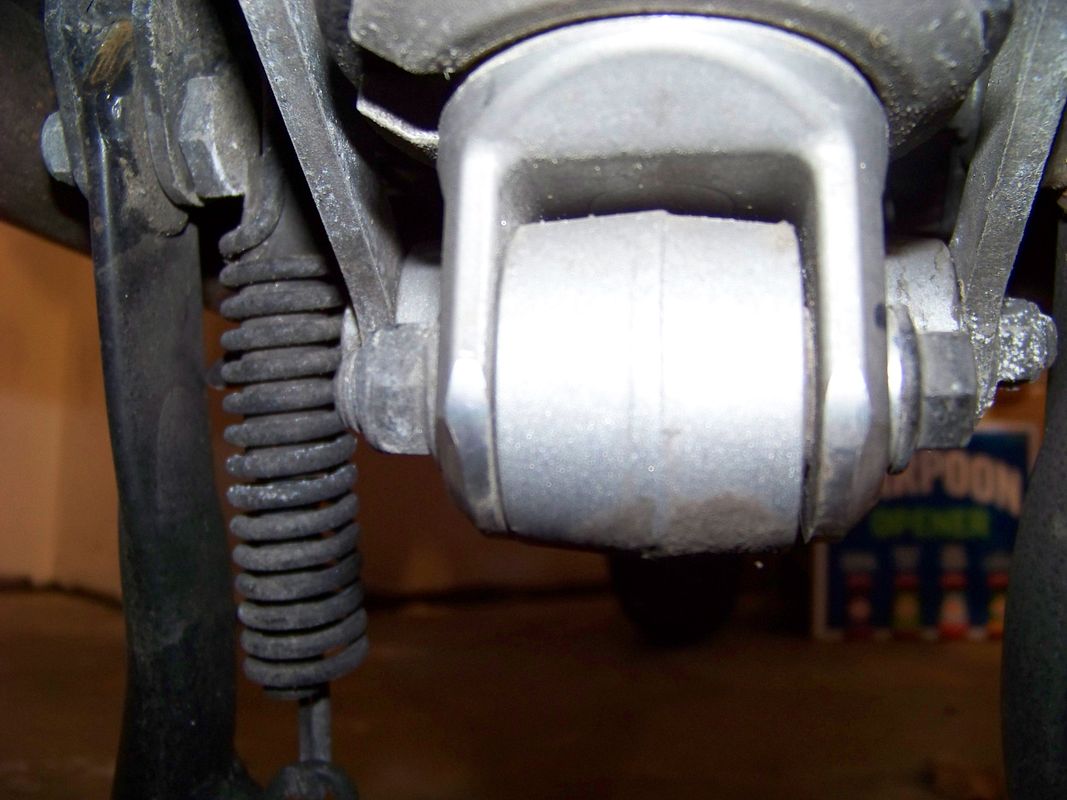More info on this clevis stuff:
The shock pivot bearing changed part numbers between the "A" and "ES" models. The A models relay arm bearing collar was always 90387-
127W0-00, and for the ES and the new part number is 90387-
10104-00. In Yamaha parts speak, the "90387" means "collar" and the first two numbers represent the inside diameter, so the A model has a 12mm ID and the ES has a 10mm ID.
Measuring an A model relay arm, and the smaller hole diameter of the stock shock yoke bears that out.
The A model bolt for that pivot is the special shoulder bolt p/n 90109-10024-00.
The threaded part is 10mm, but the shank of the bolt is 12mm, and the shoulder is 17mm. (see recycled photo below)
I'm starting to fully understand how the stock parts fit together, and why the shoulder bolt doesn't work right on the Penske clevis: The width of the shoulder is the same as the thickness of the stock yoke. The length of the shank on the shoulder bolt is the same as the inside dimension of the yoke plus the thickness of the small side of the yoke. When the bolt is installed on the stock shock the start of the threaded part of the bolt is right at the outside edge of the steel yoke, so the smaller side of the yoke is fully supported by the 12mm shank, and the larger side of the yoke is fully supported by the shoulder. When the 10mm nut is fully tightened it will only go on as far as the start of the shank.
The Penske yoke is thicker, so the shoulder is not big enough and the shank will not be fully engaged in the small end either, as noted by FontanaMan much earlier in this thread.
This means that any replacement bolt would need to be 12mm, not 10. And the spacer would have to be 12mm ID and 17mm OD, which is the same dimensions as the A model bearing collar (90387-
127W0-00). A piece of the bearing collar could be cut to make a good spacer.
The ES bolt and spacer will not work because the small hole in the shock yoke is 12mm not 10mm. I'll go back and edit my prior post that suggested it would work.



























![Decrum Motorcycle Jacket Men - Mens Leather Jacket | [1100065] Austin Brown, XL](https://m.media-amazon.com/images/I/41HqZSRj6LL._SL500_.jpg)

























